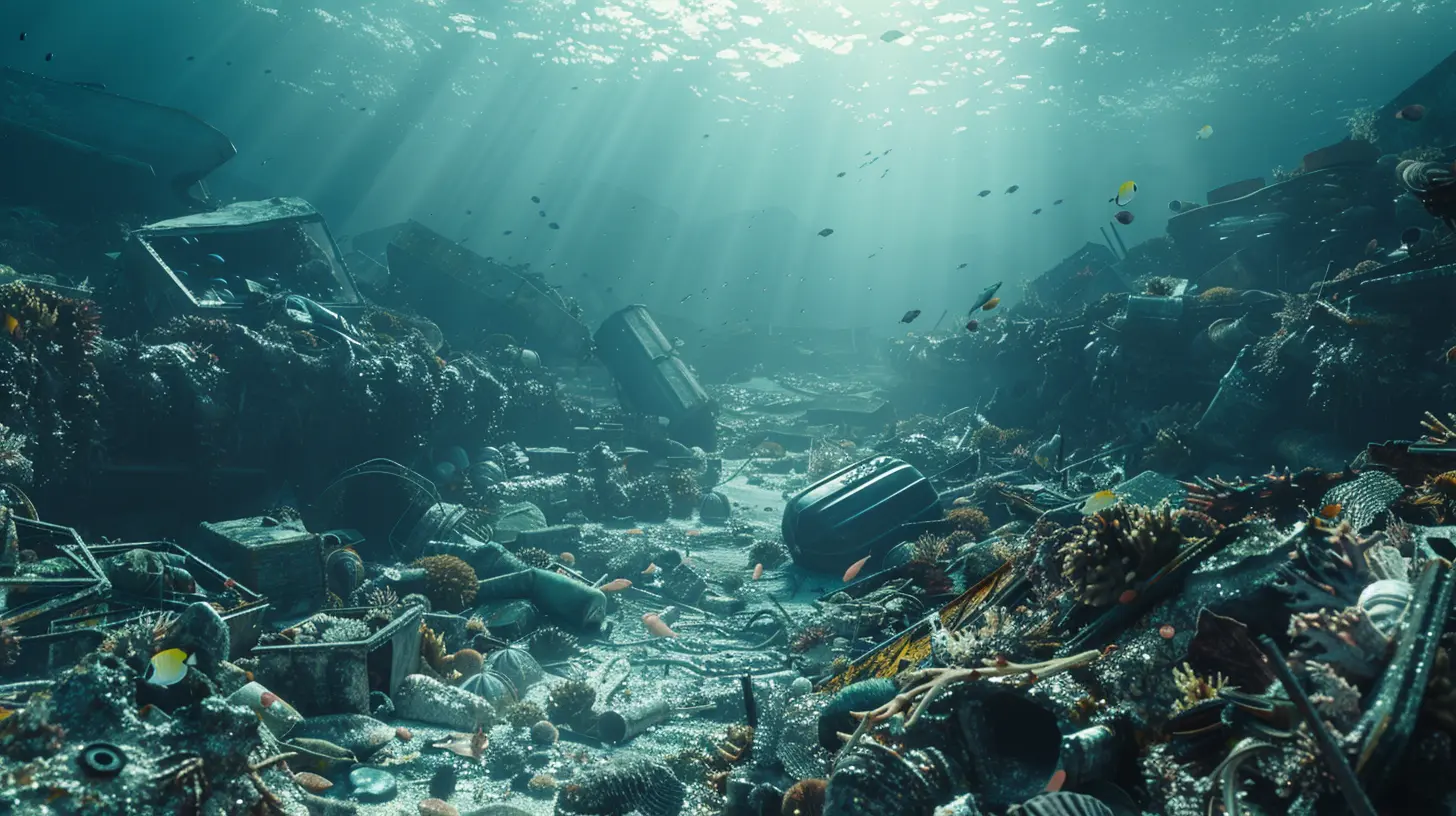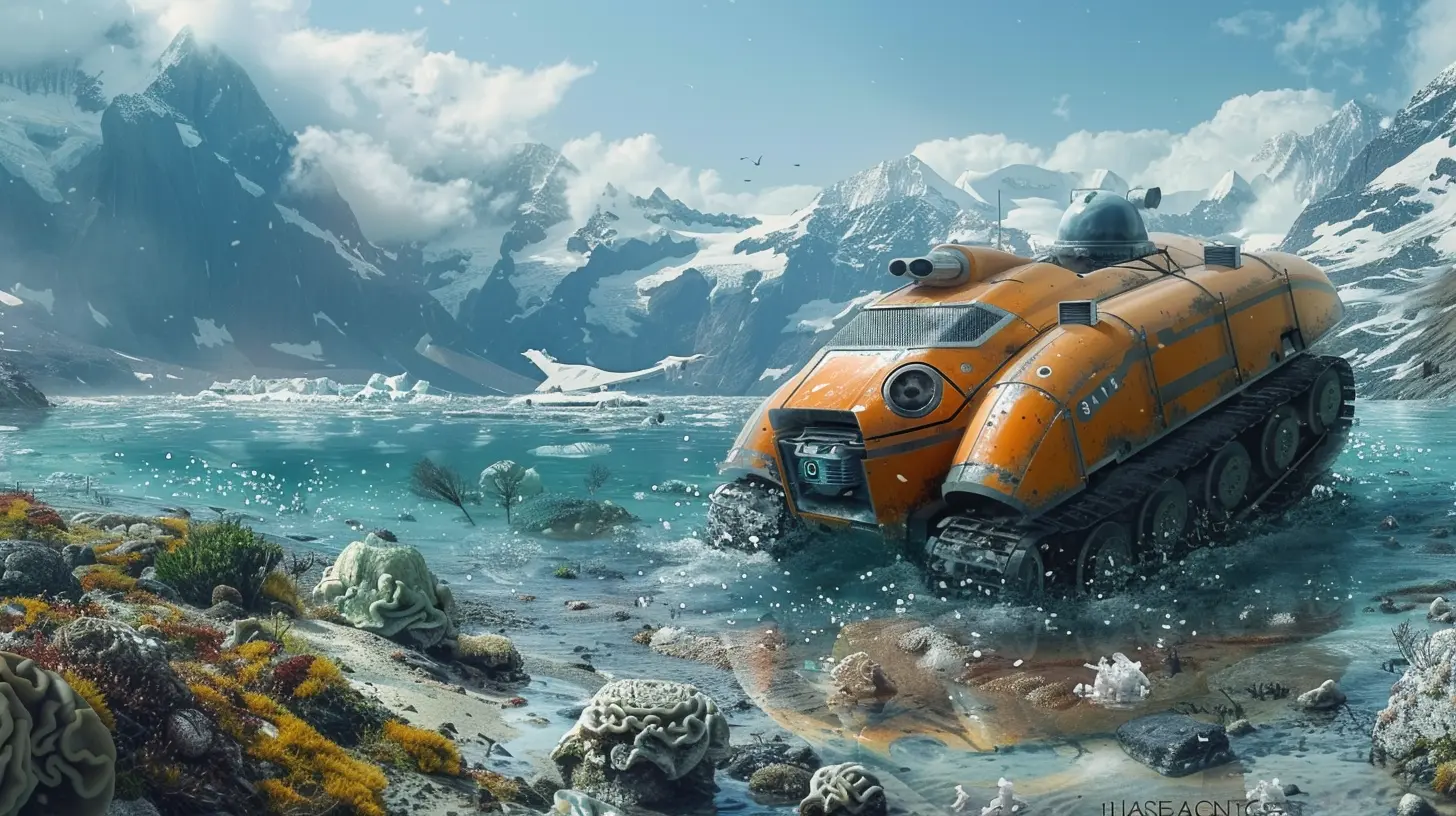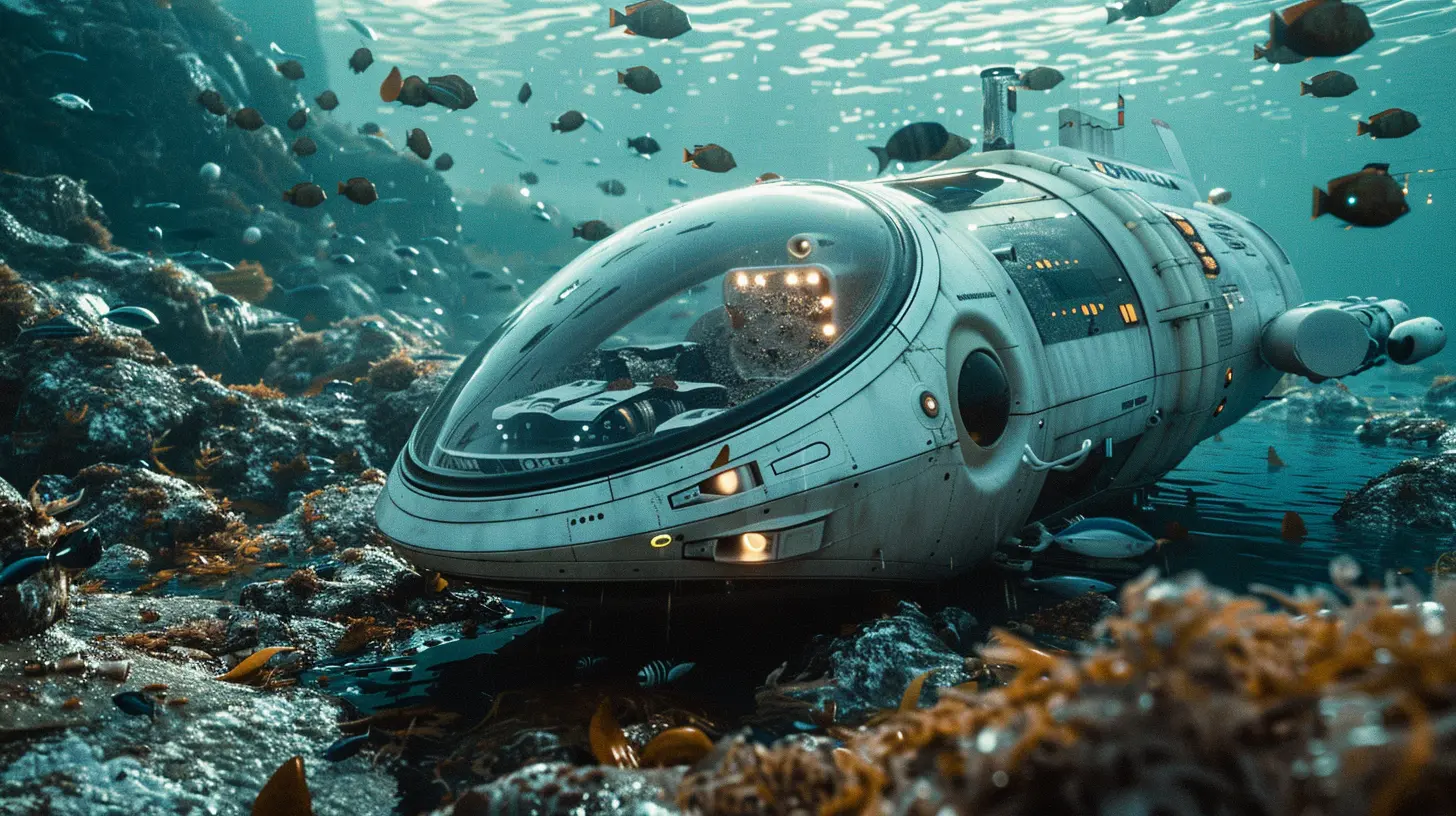Ocean Tech: How Gadgets Are Helping Clean Up the Seas
24 November 2025
Our oceans are in trouble. Every year, millions of tons of plastic and waste find their way into the water, choking marine life and threatening the delicate ecosystem. But while the situation might seem dire, there's hope on the horizon. Thanks to the power of ocean tech, gadgets are stepping up to play a crucial role in cleaning up the seas.
These innovations aren't just futuristic concepts from a sci-fi movie; they're real, and they're making a difference. From AI-driven drones to massive floating barriers, tech is diving deep (pun intended) into the fight against ocean pollution. Curious to know how these gadgets are helping? Let's dive right in!

The Ocean Plastic Problem: A Quick Look
Before we get into the tech, it's important to understand just how serious the ocean plastic problem is. Every year, around 8 million metric tons of plastic waste end up in the ocean. That's like dumping a garbage truck full of plastic into the sea every minute!This plastic doesn't just disappear. Instead, it breaks down into smaller and smaller pieces, known as microplastics, which are nearly impossible to clean up. These microplastics are ingested by marine life, entering the food chain and eventually making their way back to us. Yikes!
But it's not just the plastic that's a problem. There’s also oil spills, abandoned fishing nets, and other harmful debris floating around. The oceans are in desperate need of help, and thankfully, ocean tech is stepping up to the challenge.

How Ocean Tech Is Making a Difference
1. Autonomous Drones: The Ocean's New Best Friend
Imagine a robot gliding through the water, detecting and collecting trash. That’s exactly what autonomous drones are doing! These nifty gadgets are designed to roam the seas, scanning for debris, mapping out polluted areas, and even picking up trash.Take the SeaDrone, for example. It’s an underwater drone equipped with cameras and sensors that help it locate waste. Once it spots something, it can send the data to researchers or even help guide ships to the most polluted areas. Some drones are even equipped with robotic arms, allowing them to physically grab trash from the water.
And it’s not just underwater drones making waves. Aerial drones are also being used to survey beaches and coastal areas for trash. These flying gadgets can scan large areas quickly, providing valuable data to clean-up crews about where trash accumulates the most.
2. The Ocean Cleanup Project: Floating Barriers to the Rescue
One of the most famous efforts to clean up the ocean is The Ocean Cleanup Project, founded by Boyan Slat. This project uses massive floating barriers to capture and collect plastic from the ocean's surface. These barriers are designed to move with the ocean's current, trapping plastic in their path without harming marine life.The idea is simple, yet effective. The floating barriers act like a huge net, collecting plastic and other debris as they drift through the water. Once the trash is collected, it's hauled onto a ship and brought back to land for recycling or proper disposal.
The Ocean Cleanup Project has already started making a dent in the Great Pacific Garbage Patch, which is a massive floating island of trash in the Pacific Ocean. It's proof that with the right technology and determination, we can start to reverse the damage we've done to our oceans.
3. Trash-Eating Robots: Gobbling Up Garbage
What if we could create a machine that literally eats trash? Well, that’s exactly what some ocean tech innovators have done. Meet Mr. Trash Wheel, a water-powered robot that collects garbage from rivers and harbors before it can reach the ocean.Mr. Trash Wheel works by using the current of the water to power its conveyor belt, which scoops up trash and deposits it into a dumpster. Once the dumpster is full, it's hauled away for proper disposal. Since its launch, Mr. Trash Wheel has collected hundreds of tons of trash, including everything from plastic bottles to tires.
Other similar robots, like The WasteShark, are designed to operate in smaller bodies of water, like harbors and marinas. These autonomous robots move through the water, scooping up trash and storing it in a collection bin. Think of them as little robotic vacuum cleaners, but for the ocean!
4. AI and Data: Smarter Solutions for Cleaner Oceans
Sometimes, the best way to solve a problem is to understand it better. That’s where Artificial Intelligence (AI) and data come in. AI-powered tools are being used to analyze patterns of waste accumulation in the ocean, helping pinpoint where clean-up efforts should be focused.For example, AI algorithms can analyze satellite images to detect floating debris in the ocean. This data can then be used to direct ships, drones, or cleanup crews to the areas where trash is most concentrated. It’s like giving clean-up teams a map to the treasure—except, in this case, the treasure is trash, and the goal is to get rid of it!
Furthermore, AI is helping researchers better understand how ocean currents move waste around. By predicting where trash will go, we can implement more effective clean-up strategies.
5. Biodegradable Tech: A Step Towards Prevention
Cleaning up existing waste is essential, but what if we could stop the problem at its source? That’s where biodegradable tech comes into play. Companies are developing gadgets and materials that, instead of lasting hundreds of years, naturally break down in the ocean without harming marine life.For instance, biodegradable fishing nets are being designed to replace the traditional plastic nets that often get lost at sea and become "ghost nets"—traps that continue to catch and kill marine animals long after they've been abandoned.
Moreover, biodegradable packaging materials are also on the rise. These materials dissolve in the water over time, leaving behind no harmful residue. While this might not be a flashy gadget, it’s a crucial step towards reducing the amount of plastic that ends up in the ocean.
6. Seabins: A Vacuum Cleaner for Marinas
One of the coolest pieces of ocean tech is the Seabin. Think of it as a floating trash can for marinas, harbors, and other calm bodies of water. The Seabin is installed at water level, where it sucks in water and filters out any floating debris. It can capture everything from plastic bottles to oil and fuel, making it a valuable tool for keeping our waters clean.The best part? The Seabin runs 24/7, constantly collecting trash and keeping the water clean. It’s like having a Roomba for the ocean!
7. Solar-Powered Skimmers: Harnessing the Power of the Sun
Solar power is being used in more and more applications, and ocean tech is no exception. Solar-powered skimmers are designed to float on the surface of the water, collecting trash as they go. These skimmers are powered by the sun, meaning they can operate continuously without the need for fuel or electricity.One example is The SolarSeaSkimmer, which uses solar panels to power its trash collection system. It’s an environmentally friendly solution that not only cleans up the ocean but also reduces the need for fossil fuels.
8. Community-Driven Tech: Empowering People to Make a Difference
Technology isn't just about fancy gadgets and robots; it's also about empowering everyday people to take action. Apps like Litterati allow users to document and map the trash they find along coastlines, helping researchers and cleanup organizations track the most problematic areas.Similarly, Plastic Bank is a social enterprise that encourages people in developing countries to collect plastic in exchange for money or goods. This initiative not only helps clean up the ocean but also provides economic opportunities for individuals in need.

The Future of Ocean Tech: What's Next?
The fight to clean up the seas is far from over, but ocean tech is giving us the tools we need to make a difference. In the future, we can expect to see even more innovative solutions, from nanotechnology that breaks down plastic at a molecular level to large-scale efforts to remove deep-sea debris.As new technologies emerge, one thing is clear: we must continue to invest in and support ocean tech. The health of our oceans—and by extension, our planet—depends on it.

Conclusion
The ocean may seem vast and indestructible, but it's surprisingly fragile. Luckily, ocean tech is helping to turn the tide in the battle against pollution. From autonomous drones and trash-eating robots to floating barriers and biodegradable materials, these gadgets are making a real impact.But technology alone isn't enough. We all have a role to play in protecting our oceans. Whether it's reducing our plastic use, supporting clean-up initiatives, or simply spreading the word about the importance of ocean conservation, every little bit helps.
So, the next time you see a piece of plastic on the beach, remember: there's a whole army of gadgets out there fighting to keep our oceans clean, and you can be part of the solution too.
all images in this post were generated using AI tools
Category:
Environmental TechAuthor:

Ugo Coleman
Discussion
rate this article
1 comments
Juliet Hurst
This article highlights the innovative role of tech gadgets in ocean conservation. From drones that monitor pollution to autonomous robots collecting debris, these advancements showcase how technology can significantly contribute to cleaning our seas. It's inspiring to see such creativity aimed at protecting our planet's vital ecosystems!
November 24, 2025 at 4:30 AM


